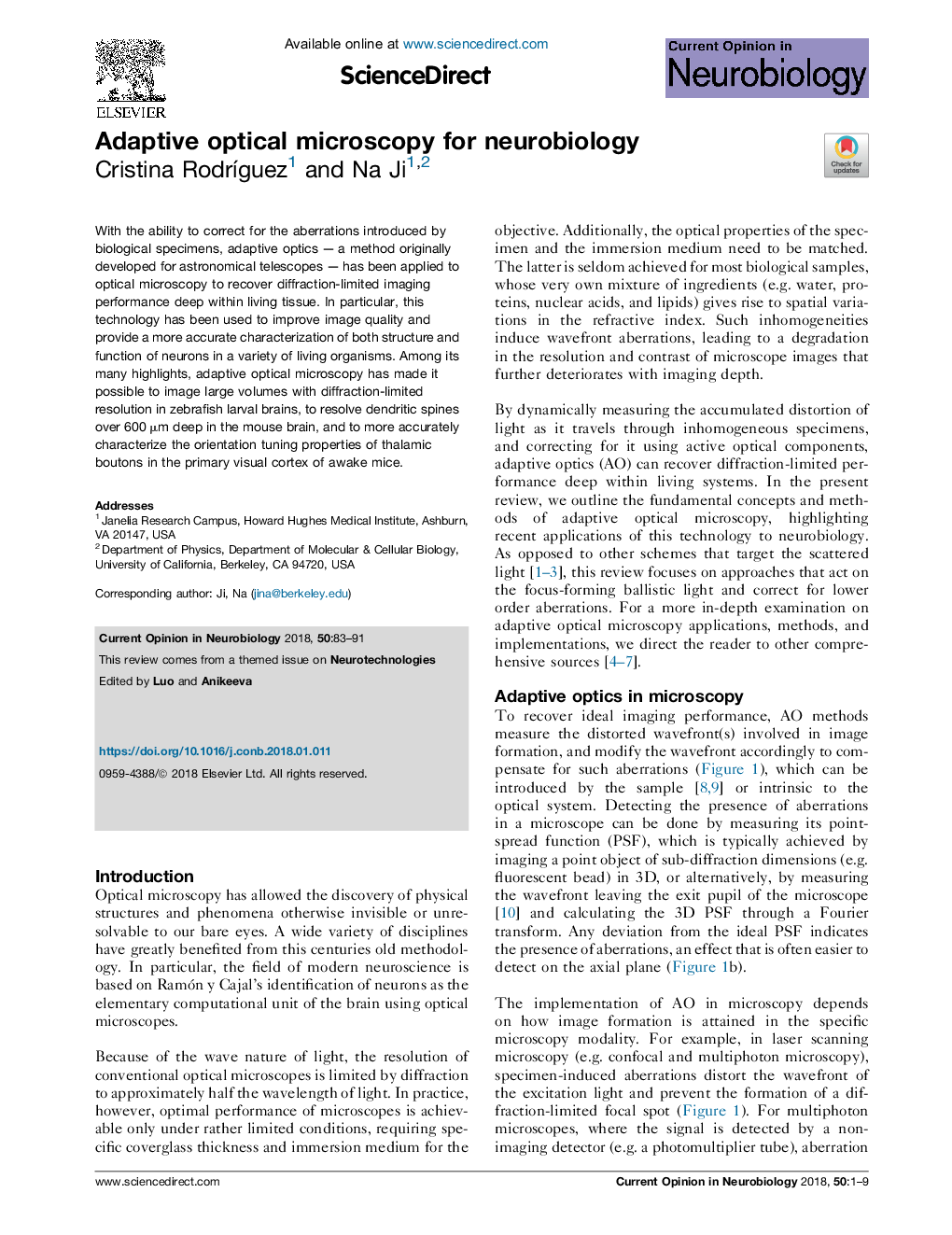| Article ID | Journal | Published Year | Pages | File Type |
|---|---|---|---|---|
| 8840096 | Current Opinion in Neurobiology | 2018 | 9 Pages |
Abstract
With the ability to correct for the aberrations introduced by biological specimens, adaptive optics - a method originally developed for astronomical telescopes - has been applied to optical microscopy to recover diffraction-limited imaging performance deep within living tissue. In particular, this technology has been used to improve image quality and provide a more accurate characterization of both structure and function of neurons in a variety of living organisms. Among its many highlights, adaptive optical microscopy has made it possible to image large volumes with diffraction-limited resolution in zebrafish larval brains, to resolve dendritic spines over 600 μm deep in the mouse brain, and to more accurately characterize the orientation tuning properties of thalamic boutons in the primary visual cortex of awake mice.
Related Topics
Life Sciences
Neuroscience
Neuroscience (General)
Authors
Cristina RodrÃguez, Na Ji,
